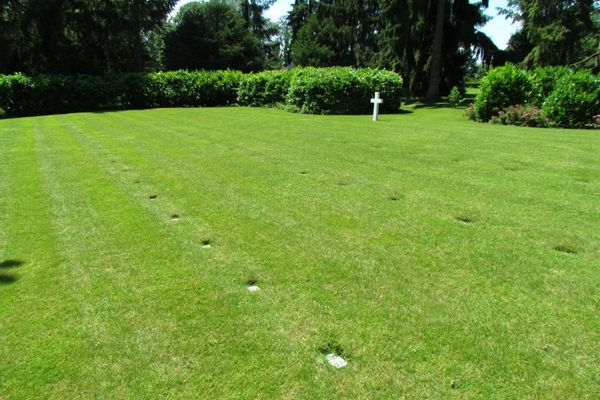The Ruins at the Hotel le Vergeur
Bits of architecture from a town destroyed in World War I now decorate this hotel garden.
In the ancient French city of Reims there is a magnificent turreted townhouse that dates from the 13th century, holding a remarkable secret: a rarely visited garden filled with architectural ruins. Collected by one man following the armistice of 1918, this haunting graveyard of forgotten doorways, columns, and archways tells the story of one France’s most historic cities, and its almost complete destruction during World War I.
Located in the bucolic Champagne-Ardennes region of northeastern France, Reims has been the traditional crowning site of the kings of France since the 11th century. The old city is dominated by the 800-year-old cathedral of Notre-Dame de Reims, while the countryside is dotted with the vineyards of prestigious champagne houses, like Veuve Clicquot, that go back hundreds of years.
But the historic beauty and charm of this bucolic city was all but wiped from the face of the Earth during World War I. As the German army poured through Belgium and into France in the autumn of 1914, Reims became a key strategic target — both tactically, as it was a gateway to Paris, about 80 miles away, and in terms of French morale. The city was swiftly captured just a month after war had been declared, although the Germans only occupied the city for eight days, until the Allied victory at the Marne forced them to withdraw.
Unable to recapture Reims, the Germans decided to reduce it to ruins. For four years, the German artillery pulverized the ancient city, all but obliterating it. High explosives and incendiary shells rained upon the city almost continually, as fire engulfed the city. On April 1st, 1917 alone, over 2,800 shells exploded on Reims. The next night, a further 2,100 shells fell on the city. By 1918 most of Reims had simply disappeared into ruins. But remnants of the city’s architectural heritage lay dotted around the devastation and would have been lost forever if not for the efforts of one man.
Hugues Krafft was born in Paris to a German father in 1853, but moved to Reims in the late 19th century to work in the lucrative champagne trade. Looking to buy a suitably grand home, he purchased an old town house, called the Hotel le Vergeur, which overlooked the old market square, where linens, wheat, and champagne had been traded for centuries.
The turreted home was severely damaged in WWI. In the 1920s, Krafft restored most of the townhouse to its original beauty, but left one wrecked section standing. That is the Pavilion Coquebert. The crumbling masonry and blasted architecture of the Pavilion, which dates to the 17th century, gives a poignant glimpse into how the rest of the devastated city would have looked in 1918.
As the ruins of Reims were torn down to make way for new construction, Krafft searched through the rubble for the remnants of the city’s historic past. He saved doorways, lintels, whole facades, columns, archways and tombs and brought them to the garden of the Hotel le Vergeur, where he created his garden of ruins. For the interior of the hotel, he salvaged fireplaces, libraries, and artwork.
He collected part of a wall from the 17th century Hotel Lagoilie de Courtagnon, from whose wrought iron balcony Marie Antoinette watched her husband Louix XVI leave the cathedral to go to the Abbey Saint-Remi to touch sufferers from tuberculosis. Elsewhere in the garden can be found an entire facade from a majestic town house, an entrance to a 6th century Benedictine monastery, a 16th century tomb of a Knight of Malta, one of the legendary Knights Hospitaller of the Order of Saint John.
Following his death in 1935, he left the collection to the Societe des Amis du Vieux Reims, where it still rests today.
Walking through the beautiful, and often deserted gardens of the Hotel le Vergeur is a similar experience to visiting an empty historic cemetery. Covered in ivy and still bearing the scars of endless shrapnel and artillery fire, the carefully collected architectural ruins speak to the four years of horror as the German shelling gradually destroyed the ancient city.
Today, Reims, with its historic cathedral surrounded by luxurious champagne houses and vineyards, is once again a bustling tourist destination. Walking through the city it is hard to imagine that nearly everything you see is not even a century old. That is, unless you venture into the walled garden of the Hotel le Vergeur, and stroll through the scattered ruins of the lost city.






















Follow us on Twitter to get the latest on the world's hidden wonders.
Like us on Facebook to get the latest on the world's hidden wonders.
Follow us on Twitter Like us on Facebook